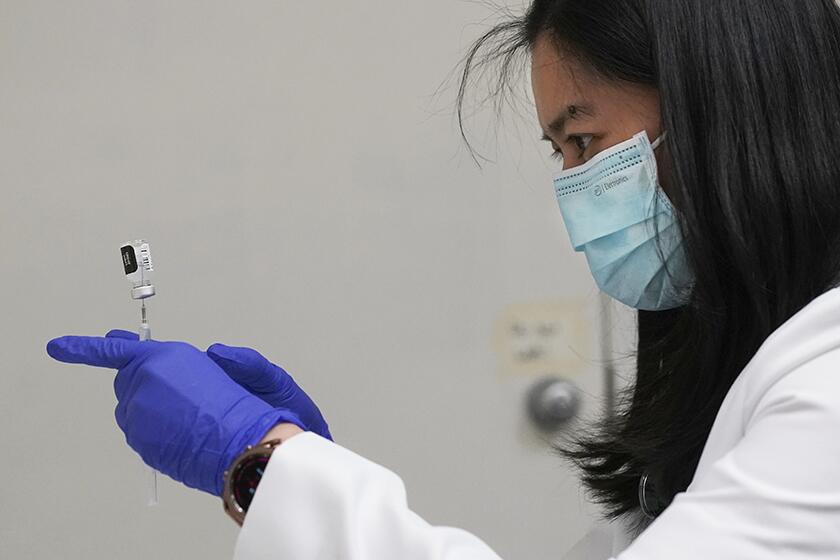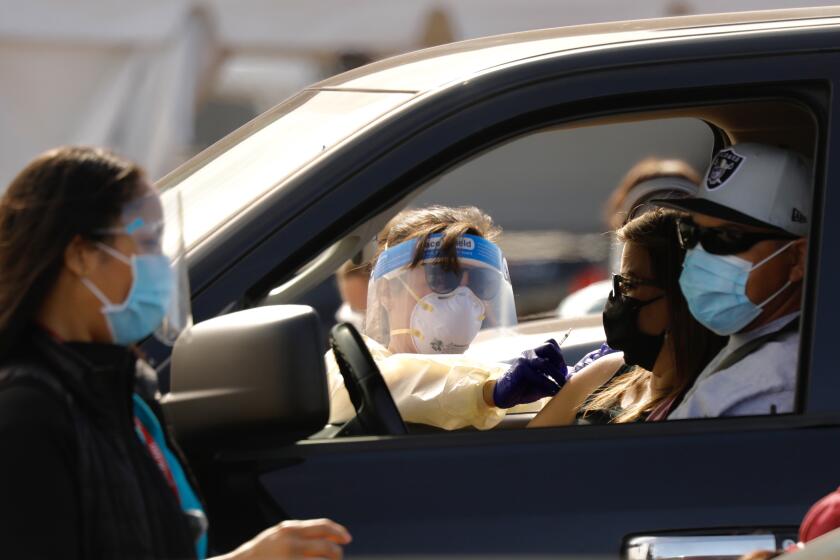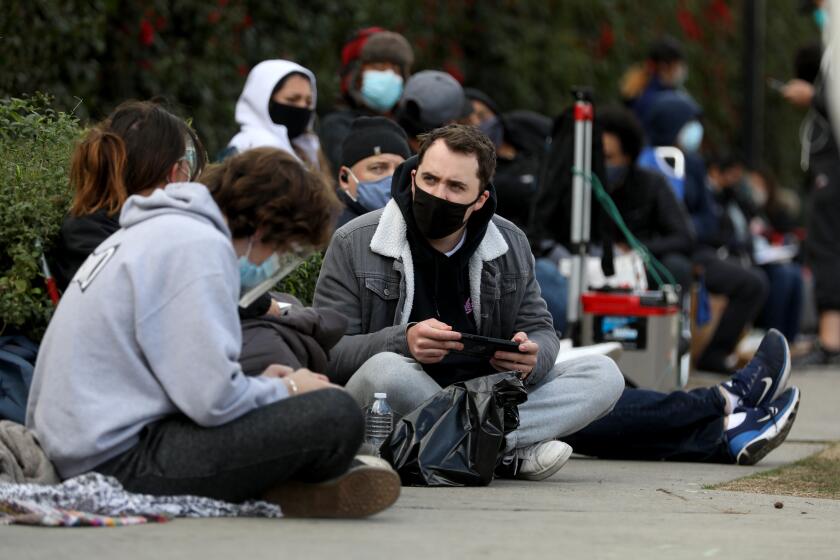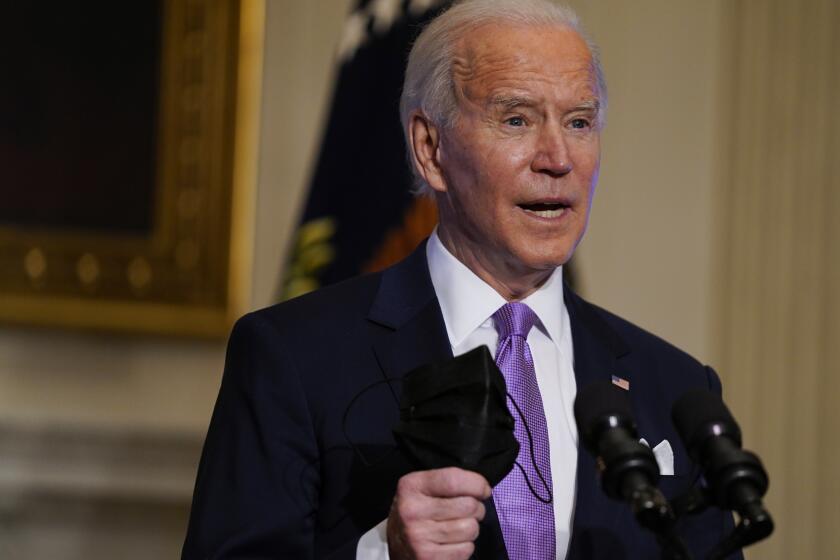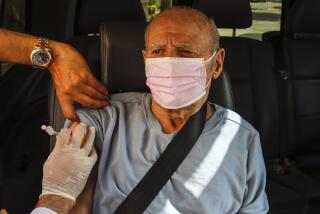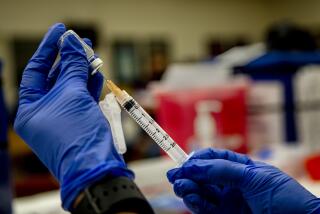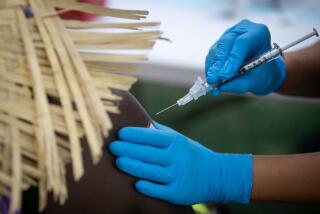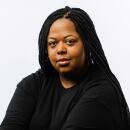When’s your turn? L.A. County residents can check COVID-19 vaccine eligibility on state site
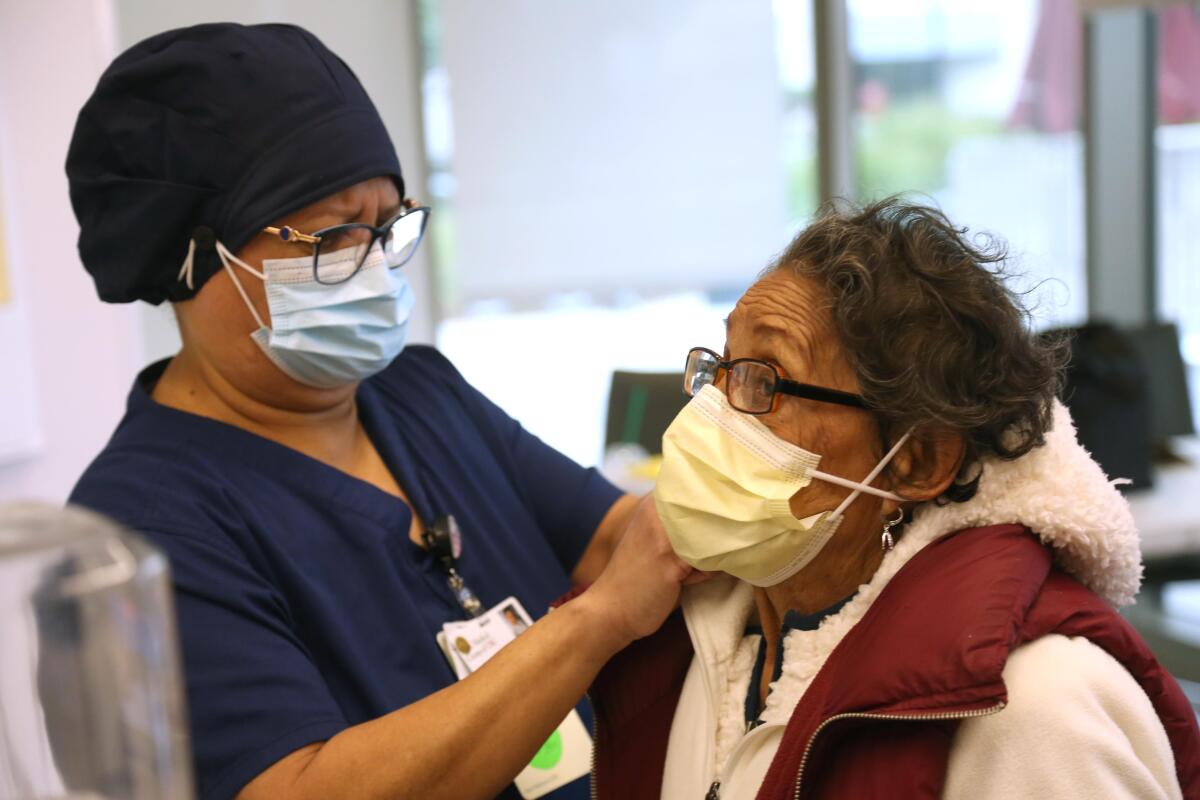
- Share via
Residents of Los Angeles and San Diego counties can now check their eligibility to receive a COVID-19 vaccine and schedule appointments through a state-run portal — the latest resource California has launched as it seeks to give its inoculation pace a shot in the arm.
The website, myturn.ca.gov, is being piloted in California’s two most-populous counties, but Gov. Gavin Newsom said the goal is to expand the system statewide in early February.
“It’s not just a notification system as some other states have, or a system just for reservations with state clinics,” he said during a briefing Monday. “This is an end-to-end system across the spectrum.”
To determine eligibility, the portal asks residents where they live, their age and whether they are a healthcare worker.
If they meet the criteria for a vaccine, residents can search for nearby sites and schedule appointments, if they’re available. Californians who are not yet at the front of the line can also sign up to be notified when it is their turn.
Vaccinations are currently being given only to long-term care facility staff and residents, healthcare workers and those who are at least 65 years old.
The state will accelerate vaccine eligibility based on age under new plan announced by Gov. Gavin Newsom.
The system will also automatically report vaccination data into the state’s systems. Doing so will hopefully reduce the reporting lags that have dogged California throughout the pandemic and, officials said, provide a more complete and contemporary snapshot of how quickly Californians are getting their shots.
Providing a way to schedule appointments is one thing, but having the capability to carry them out is another.
Even as health officials have moved aggressively to set up megasites that can dole out thousands of doses per day, as well as secure and train the workers needed to administer them, efforts have been stymied by a nationwide scarcity of shots.
“Patience is going to be required, because we just don’t have enough doses,” L.A. County Public Health Director Barbara Ferrer said Tuesday.
Prioritization has also been a fluid process, prompting confusion over who can receive a vaccine, and when. Newsom announced earlier this month that people 65 and older could get COVID-19 vaccinations — ballooning the number of eligible Californians even as supplies remained strained.
With few vaccines available to go around, some counties delayed allowing their older residents to get in line while others didn’t, which muddied the waters further.
Officials have warned that vaccines will be in short supply in part because people who already received their first shot now need their second.
Officials said California will implement a statewide eligibility standard starting in mid-February — allowing healthcare workers, seniors and those who work in the education and childcare, emergency services and food and agriculture sectors to begin making vaccine appointments, pending availability.
“Californians were understandably confused by mixed messages, variability of eligibility across the state, ‘When it’s my turn, who’s going next?’” Yolanda Richardson, secretary of the state’s Government Operations Agency, said during a briefing Tuesday.
A more uniform framework, she said, “will make it easier for Californians to understand who is eligible to make an appointment to get vaccinated.”
However, the next step of the vaccine rollout remains cloudy. California plans to shift who is prioritized in the subsequent round of COVID-19 inoculations to focus on age rather than specific occupations considered higher risk.
However, state officials have yet to specify what that new criteria will be, though they said Tuesday that ensuring equitable access to the vaccine will remain a focus.
“We don’t want to have equity and speed at odds to one another,” said Dr. Mark Ghaly, California’s health and human services secretary. “It’s an important equity principle to get those who are disproportionately impacted vaccine quickly.”
Part of that equation, he said during a briefing Tuesday, is “ensuring that we have real-time data” to assess whether those efforts are paying off, and to make adjustments if necessary.
A slide he presented offered some additional considerations — that “vaccines will be allocated to make sure low-income neighborhoods and communities of color will have access” and that “providers will be compensated in part by how well they are able to reach underserved communities.”
Ghaly said “the worst thing is when people don’t know where they are in the line” and that, in tweaking its processes, the state is “listening to a lot of feedback, making what I would say are difficult decisions, but trying to make sure that they’re clear and simple to follow.”
“Using an age-based framework helps us get there,” he said.
Ferrer told the L.A. County Board of Supervisors on Tuesday that using age groups to prioritize vaccine access would be “so much simpler” to administer, but added that “we haven’t really heard what those age groups are going to be yet.”
The pending move is already garnering criticism, however. A coalition of more than 60 community organizations on Tuesday urged Newsom to reconsider.
The new approach would leave hundreds of thousands of low-wage workers, inmates and individuals who are homeless vulnerable to the deadly virus, said Najee Ali, a South L.A. activist and part of the Community Response System of South Los Angeles coalition.
For Ali, what makes the decision even more disheartening is that research shows the coronavirus disproportionately affects Black and Latino Californians — many of who are essential workers without the option of working from home.
Ali said the decision “speaks how race and class played a factor into the change that was made by California officials.”
“We are asking for equity in the way the vaccine is distributed,” he said. “It’s a life-or-death situation for Black and Latino essential workers.”
It is unclear how the state’s shift will affect residents who are incarcerated or homeless, essential workers and individuals with underlying health conditions — all of who were slated to be next in line under the original tiered plan.
Also unsaid is how people with disabilities will be factored into the state’s guidance, which has been an ongoing point of concern from advocates and members of the state’s vaccine advisory committee.
“It sounds like it’s more bad news for people with disabilities,” Andrew J. Imparato of Disability Rights California said after Ghaly’s news conference. “They mentioned race and marginalized populations, but didn’t mention people with disabilities.”
A spokesperson for the California Department of Public Health told The Times that more details about the plan would be released as the state works its way through the still-hefty queue of people eligible to be vaccinated now.
Ghaly said that targeted outreach to reach people in vulnerable populations would be based on exposure as well, not just age, but did not elaborate on that specific formula.
“I do think that younger individuals who are in professions or are in situations where they aren’t as exposed as some of the other high-exposure industries will end up waiting a little longer than others who have either high risk or high exposures to COVID-risk factors,” he said. “So there, of course, is going to be some sectors of our population that don’t come to the front of the line as quickly as some others.”
People eager to get the COVID-19 vaccine ahead of schedule have flocked to some L.A. clinics, spending hours in an unofficial standby line for doses left over at the end of the day.
So far, California has administered more than 2.4 million vaccine doses, and more than 4.5 million have been shipped to health providers. But in a state of roughly 40 million people, and with the available vaccines both requiring two doses, that’s far from what would be needed to protect the state against COVID-19.
California has begun to ramp up its vaccination pace. Over the last week, about 149,000 doses have been administered on average each day, according to data compiled by The Times.
Given California’s size, Newsom said the state is “more like a large ship — it takes a little bit of time to shift course, but when it shifts course, it builds tremendous momentum.”
Still, supplies are thin. Unless the dose distribution increases, some officials have said Californians may not be be clear of the COVID-19 pandemic until next year.
More shots are on the way, however. President Biden formally unveiled a plan Tuesday at the White House to distribute 10 million doses nationwide each week for the next three weeks, up from the current 8.6 million.
He also announced that his administration plans to purchase 200 million more vaccine doses.
President Biden announces additional steps to boost the federal government’s role in addressing the troubled rollout of vaccines in the United States.
In the meantime, appointments remain hard to come by. They were unavailable through the city of L.A.’s web platform Tuesday morning, and a quick search for Los Angeles County also came up empty.
“We are still months away from a point where most of our residents will be immunized against this very aggressive virus,” Ferrer said during a briefing this week. “As we look forward to having more vaccines available, we must continue to remain safe and keep taking those daily steps that we know protect ourselves and protect others.”
Times staff writers Melody Gutierrez and Chris Megerian contributed to this report.
More to Read
Sign up for Essential California
The most important California stories and recommendations in your inbox every morning.
You may occasionally receive promotional content from the Los Angeles Times.
